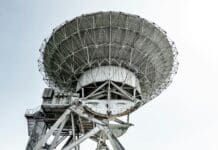This post is also available in:
 עברית (Hebrew)
עברית (Hebrew)
Chinese scientists at the Beijing Institute of Spacecraft System Engineering are planning to develop a navigation system around the moon to support Beijing’s lunar ambitions by sending over 20 satellites to orbit the moon and get accurate real-time navigation data.
A satellite-based system could provide scientists with extremely high-precision location services, improve navigation and positioning accuracy, and can be widely applied in areas like transportation, surveying and mapping, deformation monitoring, oil and gas, and many more.
According to Interesting Engineering, the construction of cislunar space infrastructure (CLSI) can provide basic and universal services for human activities in the cislunar space, including data communications, position navigation and timing (PNT). The plan is reportedly set to be executed in three phases, and the satellites will be deployed in four types of orbits to maintain a “sustainable and cost-effective design.”
Peng Jing, deputy chief designer of China’s Chang’e-5 mission told the South China Morning Post: “A satellite constellation in near-lunar space can provide real-time, high-precision navigation and positioning for lunar surface movement, landing and take-off, and support high-frequency human exploration of the moon in the long run… Our study presented a road map to assemble such a constellation step by step, expanding its coverage from the lunar south pole region to the entire moon.”
However, it is important to note that China is not the only country that is currently planning to build moon-based navigation constellations, seeing as the US, Japan and Europe also revealed similar plans (Japan proposed a Lunar Navigation Satellite System back in 2022 including eight satellites that will circle the moon).
The Chinese scientists report they plan to optimize the parameters of each orbit type and develop a more systematic design for the lunar navigation constellation. After they place 21 satellites in four types of orbits, they claim the system could give accurate positioning for any place on the lunar surface for more than 70% of the time.


























